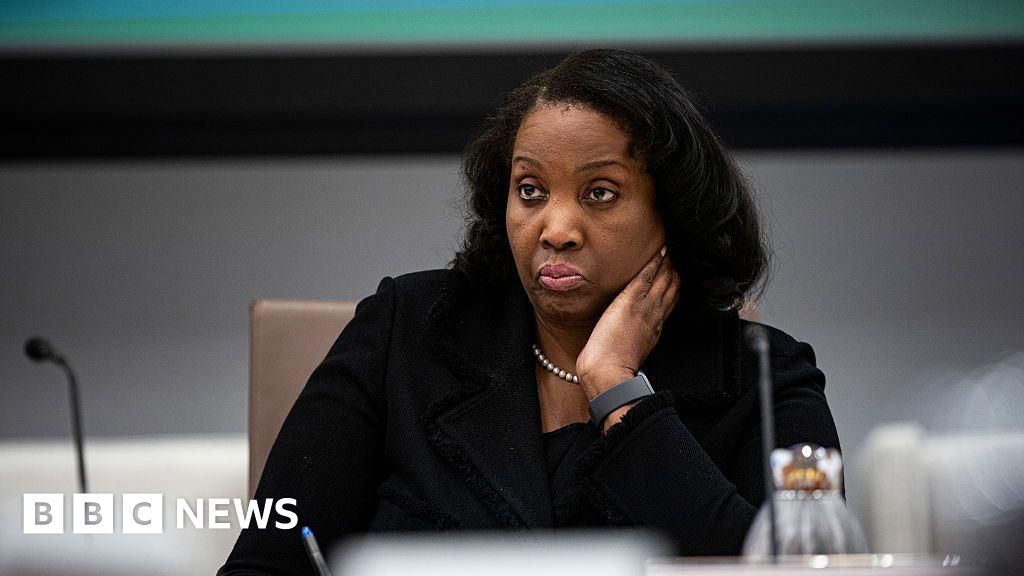International summits such as the Munich Security Conference (MSC) serve a dual function. Substantively, they are a forum for policy dialogue on pressing security issues. Symbolically, they are ritualized performances aimed at affirming shared commitments, renewing collective identity, and generating trust among participants. The ritual character of such events has received increasing scholarly attention (Kustermans et al. 2021; Holmes; Wheeler 2019; Baele and Balzacq 2022). Yet, IR literature tends to assume successful ritualization. What happens, however, when these rituals go wrong?
In this article, I conceptualize the 2025 MSC as a case of ritual failure, with a focus on the disruptive speech by U.S. Vice President J.D. Vance. By refusing to reaffirm America’s traditional security commitments to NATO and Europe, Vance’s speech disrupted the emotional flow and normative expectations of the event. The resulting confusion, backlash, and fragmentation among participants exposed cracks in the transatlantic community and revealed the limits of ritual as a vehicle for peaceful change. Drawing from my own recent work on ritual failure (Koschut 2023), this piece argues that failed rituals destabilize collective emotions, unsettle community identity, and foreground political contestation. But in doing so, they simultaneously open space for new forms of meaning-making, role negotiation, and symbolic reorientation. The 2025 MSC thus offers a critical lens into the fragility and resilience of the transatlantic security order.
Ritual, Emotion, and Community in IR
Rituals in international politics, especially in the context of security communities like NATO, are not mere formalities but emotionally charged practices that generate a “we-feeling” (Durkheim 1912; Collins 2004). These rituals create shared moods, reinforce common identities, and conceal hierarchies by producing a symbolic fiction of equality and unity (Kertzer 1988; Koschut 2022). Successful rituals depend on bodily co-presence, mutual focus of attention, and boundaries that delineate insiders from outsiders (Collins 2004). In recent years, the study of ritual has gained significant traction within IR, reflected in a growing body of scholarship (Baele & Balzacq 2022; Kustermans et al. 2021; Aalberts et al. 2021; Mälksoo 2021; Wong 2020; Holmes & Wheeler 2019; Pacher 2018; Davies 2018; Larking 2017; Oren & Solomon 2015). The theoretical contributions emerging from this renewed interest tend to cluster around two main analytical orientations: liminal and bonding perspectives.
Liminal approaches conceive of ritual as a medium of ambiguity, disruption, and transformation, emphasizing its role in enabling transitions and reconfiguring social realities. Scholars in this tradition highlight the generative potential of ritual to produce new ideas, identities, and political communities—often surfacing during moments of rupture or revolutionary change (Aalberts et al. 2021; Solomon 2019; Mälksoo 2012; Wydra 2015). These insights resonate with longstanding anthropological understandings of the sacred as emerging through liminal processes. One illustrative case is the Haitian ritual of Bois Caïman in 1791, where pre-colonial spiritual forms were revived and repurposed to galvanize rebellion against European rule. Here, ritual did not merely reflect a political community—it helped to redefine and reconstitute it, offering a symbolic and emotional foundation for resistance and transformation (Eddins 2022).
In contrast, bonding approaches emphasize the integrative and stabilizing functions of ritual in international politics. Drawing on the interactionist sociology of Erving Goffman and Randall Collins, this body of work examines how rituals foster interpersonal trust, emotional attunement, and social cohesion through repeated performances and face-to-face diplomacy (Hall 2015; Wong 2016; Holmes 2013; Keys & Yorke 2019; Holmes & Wheeler 2019; Bramsen 2023). Rather than foregrounding change, bonding theorists explore the re-creative power of ritual—that is, its capacity to renew shared commitments and reinforce collective identities. A frequently cited example is the personal rapport between U.S. President Ronald Reagan and Soviet leader Mikhail Gorbachev, which many credit with helping ease Cold War tensions and ultimately facilitate its peaceful resolution (Wheeler 2018). In this view, ritual serves as a mechanism for rebuilding trust and repairing fractured relationships, particularly in the aftermath of diplomatic crises.
Together, these two strands—liminal and bonding—underscore the multifaceted nature of ritual in international affairs. While one foregrounds rupture and transformation, the other highlights continuity and repair, offering a richer and more nuanced understanding of how actors manage uncertainty, identity, and emotional resonance through symbolic practice. Neither, however, considers the possibility and implications of ritual failure.
Ritual Failure at the 2025 MSC: The Vance Speech
The MSC is a prototypical ritual in global security politics. It brings together policymakers, diplomats, military officials, and think-tankers in a spatially bounded, emotionally charged, and symbolically dense setting. From choreographed panels and bilateral meetings to speeches in the grand Bayerischer Hof ballroom, the MSC functions as a site of community reaffirmation and collective identity performance. The recurring rituals—handshakes, shared meals, coordinated messaging—all signal transatlantic solidarity and shared purpose. Historically, even moments of political divergence at the MSC (e.g., Merkel’s 2019 emotional defense of multilateralism and the liberal international order during the first Trump administration or Macron’s 2020 passionate call for European “strategic autonomy” to become less dependent on U.S. security guarantees) have remained within the affective grammar of community. While Merkel and Macron marked a clear policy divergence, their framing was not confrontational. Instead, it appealed to shared values, implicitly reinforcing the emotional bonds of solidarity and mutual respect within the transatlantic alliance. That is, dissent has typically been ritualized in ways that allow for internal contestation without rupture. The 2025 MSC, by contrast, disrupted this affective grammar.
J.D. Vance’s (2025) keynote address came at a moment of heightened uncertainty. The 2024 U.S. presidential election had elevated a populist foreign policy discourse, and President Trump, once again a dominant political force, chose not to attend. Vance, standing in for the U.S. delegation, opened his remarks by lamenting that Europe had allegedly abandoned transatlantic values: “(W)hat I worry about is the threat from within, the retreat of Europe from some of its most fundamental values—values shared with the United States of America.” He then went on to warn European allies that the U.S. would no longer tolerate this alleged European retreat from democratic values: “In Washington, there is a new sheriff in town. And under Donald Trump’s leadership, we may disagree with your views”. Vance went on comparing NATO allies with its former Cold War adversaries: “Now, to many of us on the other side of the Atlantic, it looks more and more like old, entrenched interests hiding behind ugly, Soviet-era words like ‘misinformation’ and ‘disinformation’.” Vance concluded his speech by openly accusing Europeans of undermining the community of values that formed the bedrock of NATO and issued a thinly veiled threat to leave the transatlantic security alliance: “If you’re running in fear of your own voters, there is nothing America can do for you.”
J.D. Vance’s speech at the 2025 Munich Security Conference constituted a ritual failure on several interlocking levels, each striking at the core of what such high-level diplomatic gatherings are meant to perform and sustain. At the most immediate level, the shared mood—the affective atmosphere that binds participants into a temporary but potent emotional community—was severely disrupted. Vance’s address was marked by a conspicuous absence of empathy, solidarity, or rhetorical warmth. In place of the expected tones of reassurance and mutual commitment, he introduced a mood of cold detachment, even antagonism. This shift altered the emotional climate of the event, replacing collective affirmation with tension and unease. What had been a space of affective convergence became one of affective dissonance.
This disruption of mood was compounded by a breakdown in mutual focus. The MSC, like other diplomatic rituals, functions by concentrating attention on shared challenges and reaffirming a collective purpose—in this case, likely centered on Ukraine, the climate-security nexus, and broader questions of democratic resilience. Instead, the audience found itself forced to confront an unanticipated and destabilizing internal threat: the possibility of a U.S. retreat from its foundational role in NATO. Vance’s refusal to engage with the dominant agenda derailed the conference’s intended focal points and reoriented attention inward, toward the question of whether the alliance itself was still viable. This shift fractured the normative coherence of the gathering.
Further deepening the rupture was Vance’s symbolic violation of transatlantic ritual norms. He failed to perform the gestures that typically reaffirm alliance solidarity—no references to shared history, no evocations of mutual sacrifice, no reaffirmation of common values or mutual defense. In doing so, he rejected the performative grammar of the MSC, where speeches operate not merely as policy statements but as enactments of trust, belonging, and mutual recognition. His rhetorical stance amounted to a refusal to speak the transatlantic security community into being—an act of symbolic abandonment in a forum designed precisely to stave off such possibilities.
Finally, Vance’s rhetoric collapsed a crucial normative boundary by politicizing what is ritually depoliticized. NATO commitments are typically framed as sacred obligations that transcend partisan politics. By subordinating alliance loyalty to narrowly defined national interest, Vance blurred the moral line between collective defense and domestic political expediency. The sacred-profane distinction that undergirds NATO’s legitimacy—particularly within ritualized contexts like the MSC—was transgressed, undermining the moral architecture of the transatlantic security community.
Following Vance’s speech, the ritual energy of the conference drained rapidly; key meetings were cancelled or clouded in tension, and joint communiqués were hastily revised to account for the sudden rift. The immediate reactions made clear the severity of the rupture. High-ranking European officials left the conference floor in a rare display of diplomatic protest. In a direct response to Vance, German defense minister Boris Pistorius blasted the U.S. Vice President, calling his speech “not acceptable” . France’s foreign minister, Jean-Noël Barrot, echoed the sentiment, stating that “no one can impose” their model on Europe . Most attendees at the summit responded to Vance’s speech with sparse, modest applause and “sat stony-faced,” according to reports . An unnamed Eastern European official noted that the speech was all anyone was talking about. Several U.S. and European diplomats expressed dismay during the address, with one remarking it left “a room full of people with their mouth open.” EU foreign policy chief Kaja Kallas felt the U.S. was “trying to pick a fight with us.” Norwegian Prime Minister Jonas Gahr Støre disagreed with Vance’s prioritization of free speech over Ukraine, Russia, and China, saying he could raise any issue but the focus should remain on security . On the other hand, Axel Springer CEO Mathias Döpfner praised it as an “inspiring message” that had been “intentionally misunderstood ” In a March 2025 Financial Times interview, Italian Prime Minister Giorgia Meloni voiced support, saying Europe “has a bit lost itself”.
Interpreting the Fallout: Ritual Failure as a Catalyst for Transformation
Following the ritual failure at the 2025 Munich Security Conference, actors responded in three key ways. First, some sought to repair the symbolic rupture by reframing it as a reaffirmation of transatlantic unity, as seen in NATO’s Secretary General Mark Rutte’s (2025) efforts to reassert shared values. Second, others (such as Pistorius and Kallas) rejected Vance’s speech as unacceptable, characterizing it as an affront to transatlantic values. Third, some (such as Meloni and Döpfner) embraced the disruption, using it to push for strategic change, such as deeper European defense integration. These responses highlight that ritual failure is not simply disorder, but a site of contestation over future meanings and directions. It exposes hidden fissures, unspoken anxieties, and contested hierarchies. In the case of the MSC, the breakdown of ritual — signaled by JD Vance’s confrontational tone, the deviation from shared topics, and the breach of normative boundaries — served to illuminate previously latent fissures within the transatlantic security community. Most notably, it exposed the fragility of a collective transatlantic identity that has long depended on symbolic affirmations of unity and shared democratic values, particularly through the recurring ritual of American reassurance. When that assurance was withdrawn or replaced with antagonism, the emotional architecture of NATO—its feelings of mutual trust, shared threat perception, and empathetic commitment—was thrown into sharp relief.
This ritual failure also unmasked several asymmetries that persist within the alliance. First, there is an emotional asymmetry. Europe’s enduring need for symbolic and strategic affirmation from the U.S. is not necessarily reciprocated to the same degree, creating an imbalance in how reassurance rituals are interpreted and valued. Second, the episode highlighted an emerging ideological gap between sections of the U.S. political elite and their European counterparts, with diverging visions of what constitutes the “West” and what threats—internal versus external—ought to be prioritized. These disjunctures are certainly not new, but the failed ritual performance rendered them unmistakable and, crucially, emotionally charged.
Yet, as Victor Turner (1969) argued in his seminal work on ritual and social drama, the collapse of structure can open up a space for communitas — a fleeting but potent form of collective vulnerability that allows new solidarities to form. The stunned silence and shared discomfort experienced by European leaders in the face of Vance’s remarks may have produced a moment of unintended emotional bonding, reinforcing intra-European unity and a sense of common purpose. In this liminal space, political actors can renegotiate meanings, reaffirm shared values, or even initiate new forms of symbolic practice to compensate for the breakdown. Thus, ritual failure, while disruptive, can be generative, catalyzing reflection, adaptation, and, potentially, transformation.
Whether the MSC’s 2025 rupture will result in deeper fragmentation or a reinvigorated alliance hinges on the ritual responses that follow. These include who gains narrative authority over the episode — will it be framed as a betrayal, a wake-up call, or a necessary recalibration? — and how the symbols of transatlantic solidarity are subsequently reinterpreted or replaced. For example, increased intra-European defense coordination or renewed public affirmations of NATO’s relevance may serve as compensatory rituals. Ultimately, the crisis of ritual at the MSC underscores not just the volatility of international symbolism, but also its plasticity — its capacity to evolve, adapt, and renew under pressure.
Conclusion
This article has argued that international rituals such as the Munich Security Conference do more than symbolically affirm alliances — they actively produce and sustain emotional cohesion, shared identity, and political order. When these rituals fail, as they did in 2025, the consequences are far-reaching. Ritual failure disrupts the performative scripts of diplomacy, undermines trust, and reveals the symbolic fragilities upon which international cooperation depends. It politicizes what is normally depoliticized and calls into question the stability of identities and alliances that are typically reaffirmed through ritual practice.
Yet failure also creates opportunities. The breakdown of the MSC ritual opened a liminal space in which actors reflexively engaged with the meaning of the alliance, its emotional foundations, and its future trajectory. Responses ranged from reaffirmation and reinterpretation to innovation and strategic recalibration. These varied reactions illustrate that ritual failure, while destabilizing, can also be generative. It invites the search for new meanings, new solidarities, and even institutional transformation.
For IR scholars, this case highlights the importance of integrating emotional and performative dimensions into our analyses of diplomacy, identity, and power. It demonstrates that the fragility of peace and order is not only a matter of material capability or institutional design but also of symbolic resonance and emotional attachment. For policymakers, the implications are equally pressing: the rituals of diplomacy must be treated not as peripheral theatrics but as vital mechanisms of cohesion, reassurance, and collective meaning-making. In an era of geopolitical uncertainty and shifting alliances, understanding the dynamics of ritual failure—and responding to them effectively—may prove critical to preserving international cooperation and stability.
References
Aalberts, Tanja, Xymena Kurowska, Anna Leander, Maria Mälksoo, Charlotte Heath-Kelly, Luisa Lobato, Ted Svensson (2021). Rituals of World Politics: On (Visual) Practices Disordering Things. Critical Studies on Security, 8(3): 240-264.
Baele, Stephane J. and Thierry Balzacq (2022): ‘International Rituals: An Analytical Framework and Its Theoretical Repertoires’. Review of International Studies 48(1): 1-23.
Bramsen, Isabel (2023) The Micro-Sociology of Peace and Conflict. Cambridge University Press.
Collins, Randall (2004). Interaction Ritual Chains. Princeton: Princeton University Press.
Davies, Mathew (2018). Ritual and Region: The Invention of ASEAN. Cambridge: Cambridge University Press.
Durkheim, Émile (2008/1912) The Elementary Forms of Religious Life. Translated by Carol Cosman. Oxford: Oxford University Press.
Eddins, Crystal N. (2022) Rituals, Runaways, and the Haitian Revolution. Cambridge: Cambridge University Press.
Hall, Todd H. (2015). Emotional Diplomacy. Official Emotion on the International Stage. Ithaca: Cornell University Press.
Holmes, Marcus and Nicholas J. Wheeler (2019). Social Bonding in Diplomacy. International Theory, 12(1): 133-161.
Keys, Barbara and Claire Yorke (2019). Personal and Political Emotions in the Mind of the Diplomat. Political Psychology, 40(6): 1235-1249.
Koschut, Simon (2023). When International Rituals Go Wrong: How Ritual Failure Undermines Peaceful Change in NATO. Cooperation and Conflict, 59(2): 290-307.
Kustermans, Jorg, Ted Svensson, Julia Costa López, Tracy Blasenheim, and Alvina Hoffmann (2021). Ritual and Authority in World Politics. Cambridge Review of International Affairs, 35(1): 2-30.
Larking, Emma (2017). Human Rights Rituals: Masking Neoliberalism and Inequality and Marginalizing Alternative World Views. Canadian Journal of Law and Society, 32(1): 1-18.
Mälksoo, Maria (2012). The Challenge of Liminality for International Relations Theory. Review of International Studies,38(2): 481-494.
Mälksoo, Maria (2021) A Ritual Approach to Deterrence: I am, Therefore I Deter. European Journal of International Relations, 27(1): 53-78.
Oren, Ido and Ty Solomon (2015). WMD, WMD, WMD: Securitisation Through Ritualized Incantation of Ambiguous Phrases. Review of International Studies, 41(2): 313-336.
Pacher, Andreas (2018). The Ritual Creation of Political Symbols. International Exchanges in Public Diplomacy. British Journal of Politics and International Relations, 20(4): 880-897.
Rutte, Mark (2025) Interview with CNN. In: Franke, Benedikt (ed.) Selected Speeches Held at the Munich Security Conference 2025. Hamburg: Mittler, 71-72.
Solomon, Ty (2019). Rhythm and Social Mobilization in International Relations. International Studies Quarterly, 63: 1001-1013.
Turner, Victor (1969). The Ritual Process. Structure and Anti-Structure. Brunswick and London: Aldine Transaction.
Vance, James D. (2025) Transcript of Speech by the Vice President of the United States. In: Franke, Benedikt (ed.) Selected Speeches Held at the Munich Security Conference 2025. Hamburg: Mittler, 15-26.
Wheeler, Nicholas J. (2018) Trusting Enemies. Interpersonal Relationships in International Conflict. Oxford: Oxford University Press.
Wong, Seanon S. (2020) One-Upmanship and Putdowns: The Aggressive Use of Interaction Rituals in Face-to-Face Diplomacy. International Theory, 13(2): 341-371.
Wydra, Harald (2015). Spells of the Sacred in a Global Age. Journal of International Political Theory, 2(1): 95-110.

 Movie
Movie 2 months ago
189
2 months ago
189 





![Presidents Day Weekend Car Sales [2021 Edition] Presidents Day Weekend Car Sales [2021 Edition]](https://www.findthebestcarprice.com/wp-content/uploads/Presidents-Day-Weekend-car-sales.jpg)



 English (United States)
English (United States)